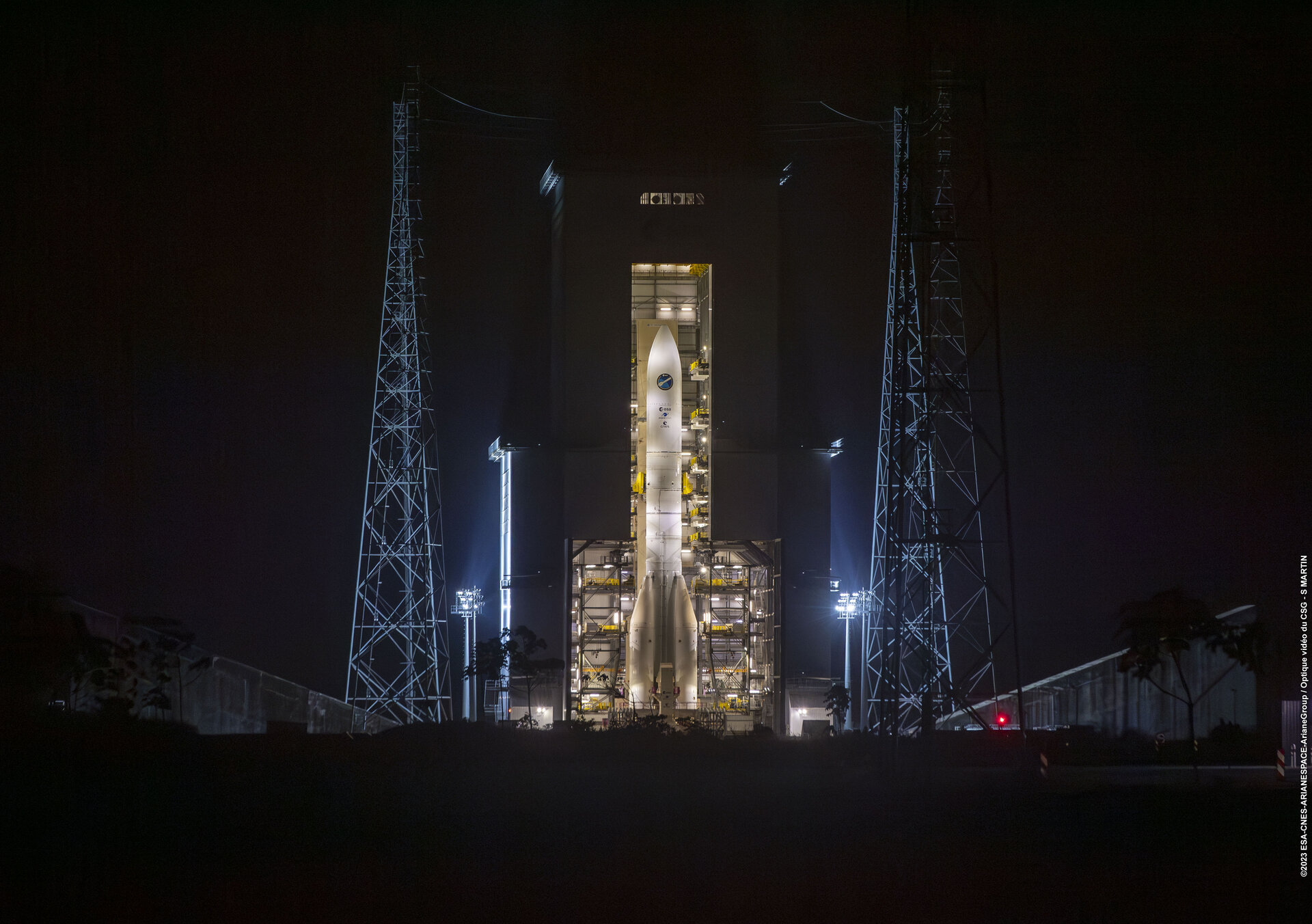Nighttime rehearsal for Ariane 6 towards first flight
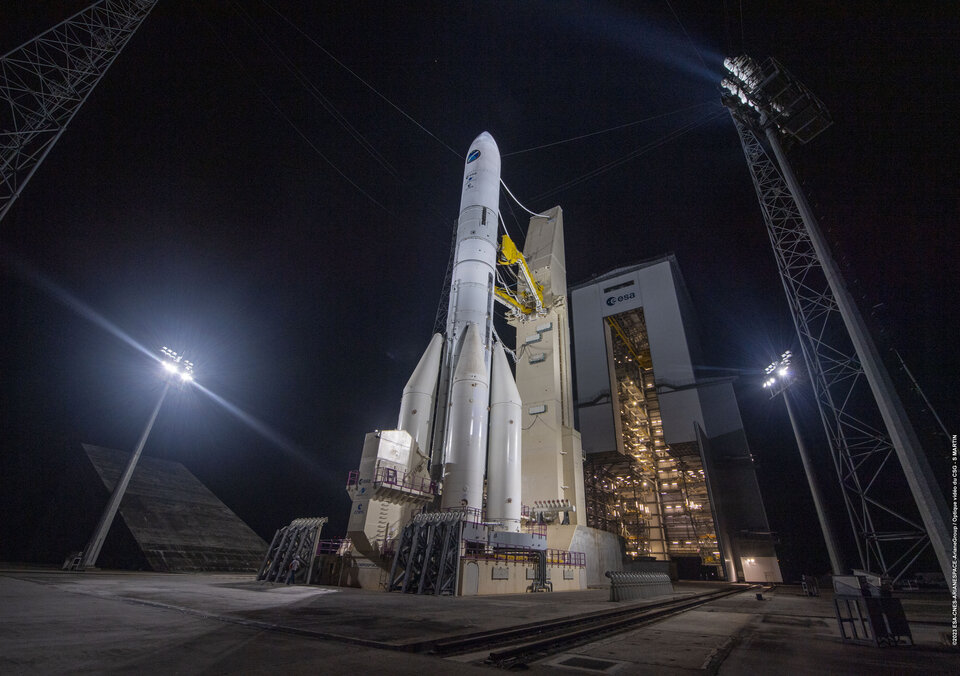
Yesterday, a team of CNES, ESA, Arianespace and ArianeGroup personnel at Europe’s Spaceport in Kourou, French Guiana, completed a full-scale wet rehearsal of the new Ariane 6 rocket that was fuelled and then drained of its fuel. The test lasted over 30 hours with three teams working in shifts of 10 hours each.
The goal was to increase the robustness of the launch system and to test emergency safety procedures with an interruption of the countdown from simulated anomalies.

The wet rehearsal – called combined test loading, abbreviated to CTLO2.1 – is the third time the Ariane 6 ground teams have practiced a full launch countdown, after a first rehearsal on 18 July and a first ignition of the main engine on 5 September. Yesterday’s test concentrated on system robustness and how well Ariane 6 and the teams handle situations at the edge of the operational parameters. This time, the operations were performed at night to test operations in cooler ambient temperatures, while the July and September tests were run in daylight.
“The whole team performed this CTLO2.1 countdown to near perfection,” exclaims Jean-Michel Rizzi, ESA Ariane 6 launch base manager, “it was a very long operation but the dedicated teams and efforts put in achieved a complete success, bravo to everybody involved.”
Cold liquid fuel – and lots of it
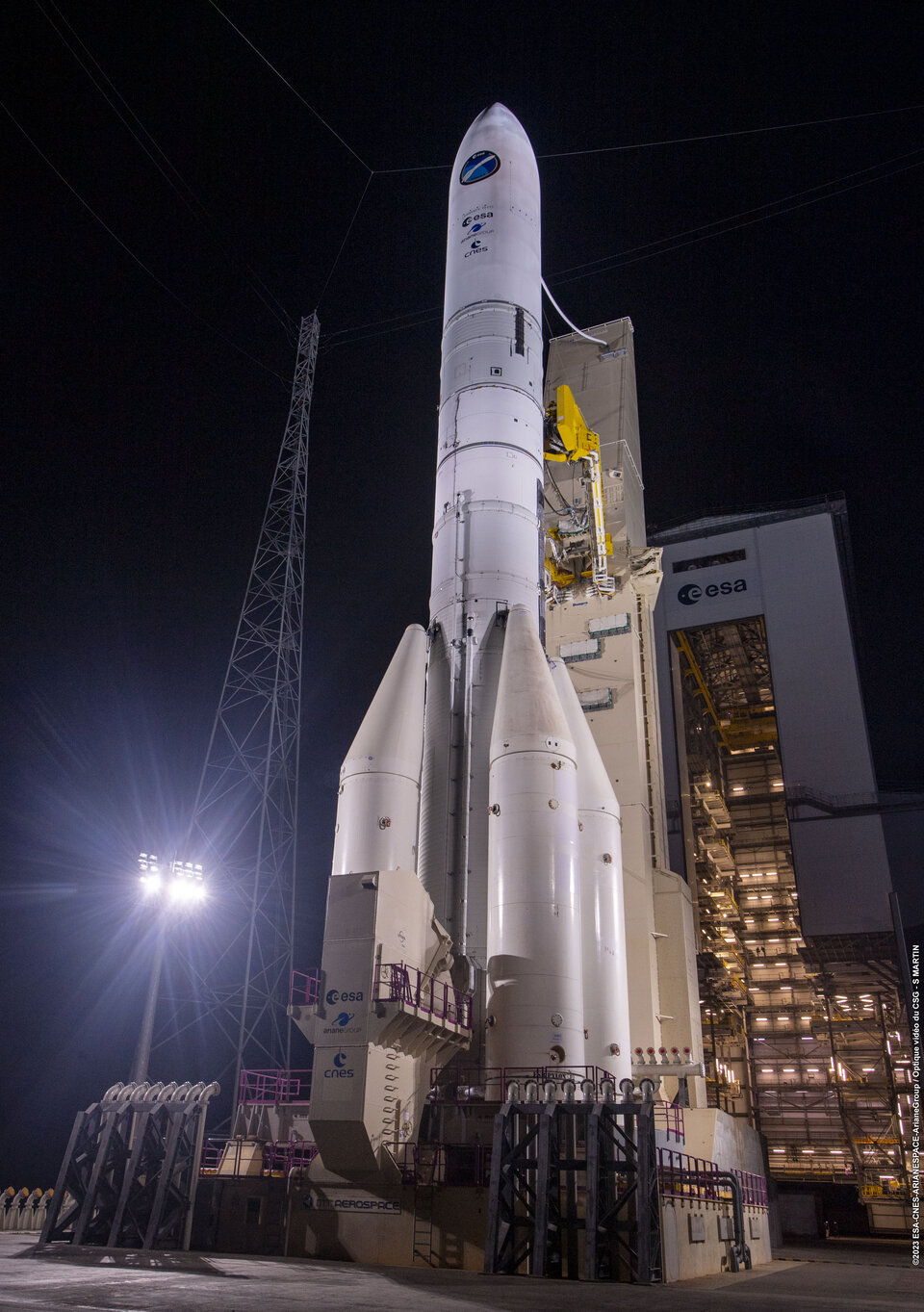
Ariane 6 uses liquid oxygen and hydrogen as its fuel to power into space. These power-dense liquids are great fuels but need to be chilled to extreme temperatures below -250°C, making them hazardous to work with. At these temperatures the liquids will instantly expand if it heats up and can cause condensation or even ice on the rocket as it cools down in the surrounding tropically humid air.
Ariane 6 tanks hold 180 tonnes of propellant, which is why fuelling and then draining operations take so long – it took over seven hours to drain the liquid hydrogen from its tanks alone. Engineers are constantly adapting flow rate and monitoring temperatures, pressure in the tanks and pipes, and the ground systems underground pipelines that extend through hundreds of meters to transport the fuel to the rocket.
The core stage of the Ariane 6 now standing on its launchpad is identical to the real thing, but it is not meant to leave Earth. The rocket boosters are inert as they use solid propellant and don’t require fuelling, but the rest is the real deal – including the Vinci upper stage that would only fire its engines once separated from the core stage in space. The fuelling of the upper stage is also included in all rehearsals.
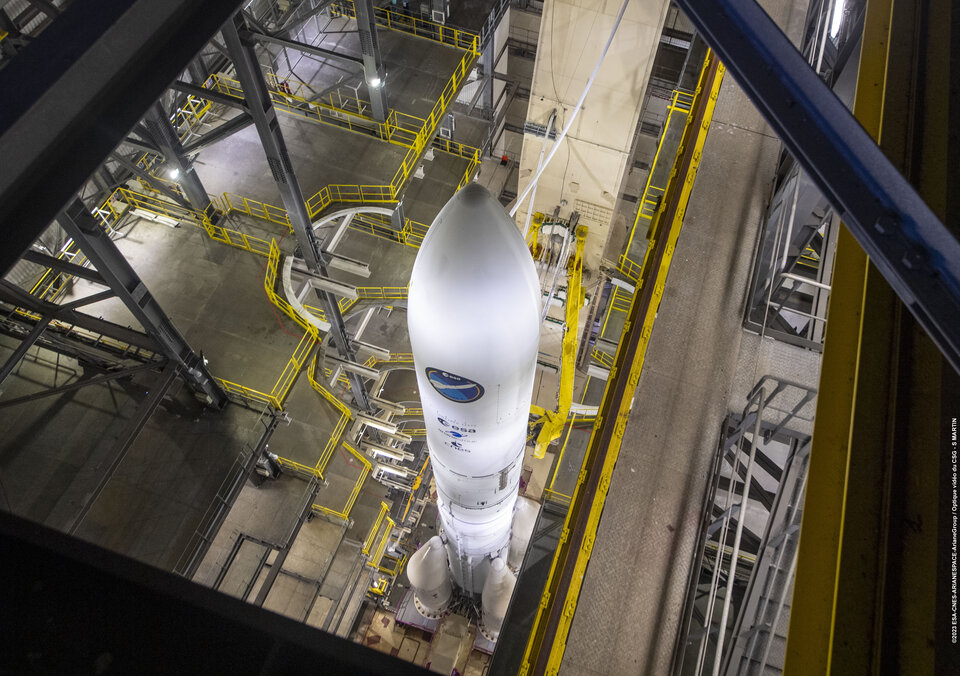
“We prepare for a launch, or in this case a rehearsal, many days in advance,” says Tony dos Santos, ESA’s Ariane 6 ground systems operations manager at Kourou, “the ground tanks where we store the liquid hydrogen and oxygen need to be replenished, the launchpad needs to be primed and prepared: it’s an all-hands operation working in shifts that is a major collective effort involving teams from ESA, CNES, Arianegroup and Arianespace based on both sides of the Atlantic, both in Les Mureaux, France, and Kourou.”
“This night-time rehearsal allowed the teams to practice loading the rocket with fuel when the temperature outside is lower – without the tropical sunlight shining on the Ariane 6 tanks the fuel inside behaves noticeably different and we need to consider and accommodate for condensation and ice formation.”
Rehearse for launch
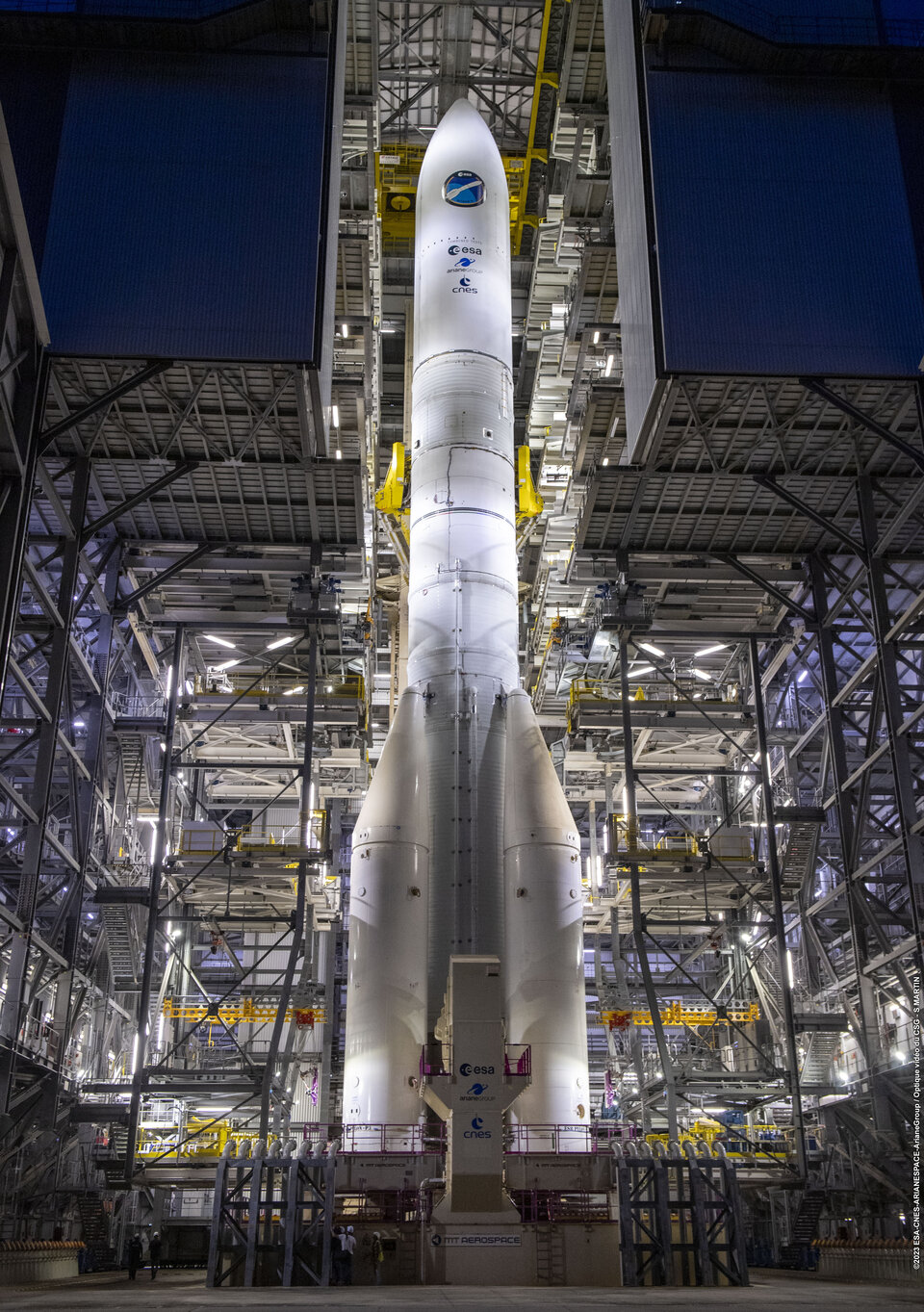
“As these operations are so delicate, and Ariane 6 is an all-new launch system, the more rehearsals we can do, the better, because we need to explore the robustness of the systems.” explains Pier Domenico Resta, ESA’s Ariane 6 launch system and engineering manager, “Through simulations of off-nominal situations the CTLO 2.1 has given the operational teams more confidence in launch countdowns and more test data for analysis and smooth operations to liftoff.”
After this successful rehearsal, the next major test will turn up the heat: a full eight-minute firing of the Ariane 6 rocket’s main engine that would normally propel the rocket and its passengers into space. For this test, scheduled before the end of November, the Ariane 6 test model will continue to stay firmly fixed to the ground.
“We are working all out to get Ariane 6 off the ground and looking forward to see it rise from the launchpad soon,” concludes Pier Domenico.


